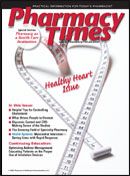Publication
Article
Pharmacy Times
Case Studies
Author(s):
Dr. Coleman is an assistant professor of pharmacy practice and director of the pharmacoeconomics and outcomes studies group at the University of Connecticut School of Pharmacy.
Glaucoma

OA is a 64-year-old African American woman who comes to the pharmacy with aprescription for combination timolol-dorzolamide eye drops. She tells the pharmacistthat she has just come from her ophthalmologist appointment and that her glaucomawas still not well-controlled. The pharmacist looks at OA?s profile and notices thatOA has been taking timolol eye drops for the past 6 months. OA asks the pharmacist,"Why do I need to take another eye drop, especially because my glaucoma does notbother me?"
How should the pharmacist reply to OA?
Prenatal Vitamins

SC is a 27-year-old mother of 2 children and is expecting her third child in about 8months. She comes to the pharmacy with a prescription for iron supplementation,which her obstetrician gave her to treat mild anemia. The pharmacist reviews SC?sprescription profile and notes that she started taking Vitafol-OB prenatal vitaminsa few weeks ago. When the pharmacist comes back with her prescription, SC asksif she needs to take both supplements, or can she just take the newer one her physiciangave her today?
How should the pharmacist respond?
ANSWERS
Glaucoma
Glaucoma is a disease of the optic nerve, affecting over 4 million Americans (disproportionately affecting African Americans), and results in decreased visual acuity. Ninety percent of glaucoma patients have open-angle disease, which develops slowly and is associated with few symptoms. Glaucoma results from decreased drainage of aqueous humor from the eye, which results in increased intraocular pressure (IOP). Patients are typically treated with a single antiglaucoma eye drop, most commonly a beta-blocker (such as timolol). In patients like OA who do not respond to monotherapy, however, an agent from a different class (carbonic anhydrase inhibitor, nonspecificadrenergic agonists, prostaglandin analogs, or cholinergic agonists) or combination therapy is required. The pharmacist should tell OA that the goal of glaucoma treatment is to preserve visual function by reducing IOP. It should be explained to OA that the 2 eye drops (a beta-blocker and carbonic anhydrase inhibitor) work in different ways to decrease fluid production and pressure in the eye. Because poor adherence to glaucoma medications is common, OA should be counseled regarding the importance of using the drops even though she has no noticeable signs or symptoms.
Prenatal Vitamins
The pharmacist should tell SC that many different formulations of prenatal vitamins are available, but they are all similar due to the increased amounts of folic acid, calcium, and iron in them to help expectant mothers meet their Recommended Daily Allowance (RDA; 0.4 mg of folic acid, 1200 mg of calcium, and 30 mg of iron). The folic acid is important, particularly in the first month of pregnancy, to prevent spina bifida. The calcium helps prevent women from developing decreased bone density, and the iron helps prevent anemia. Most prenatal vitamins (including Vitafol-OB) contain 25 to 65 mg of elemental iron, which meets the RDA for pregnant women; however, in a patient like SC, who is anemic, additional iron supplementation is often prescribed. The pharmacist should inform SC that both medications need to be taken, because the iron supplement does not contain the extra folic acid or calcium she needs. In addition, because SC has 2 children at home, the pharmacist should be sure to remind SC to keep both her prenatal vitamins and iron supplements out of their reach; accidental iron overdose is the leading cause of fatal poisoning in children younger than 6 years of age.
Read the answers
function showAnswer() {document.getElementById("answer").style.display = 'block';document.getElementById("link").style.display = 'none';}







